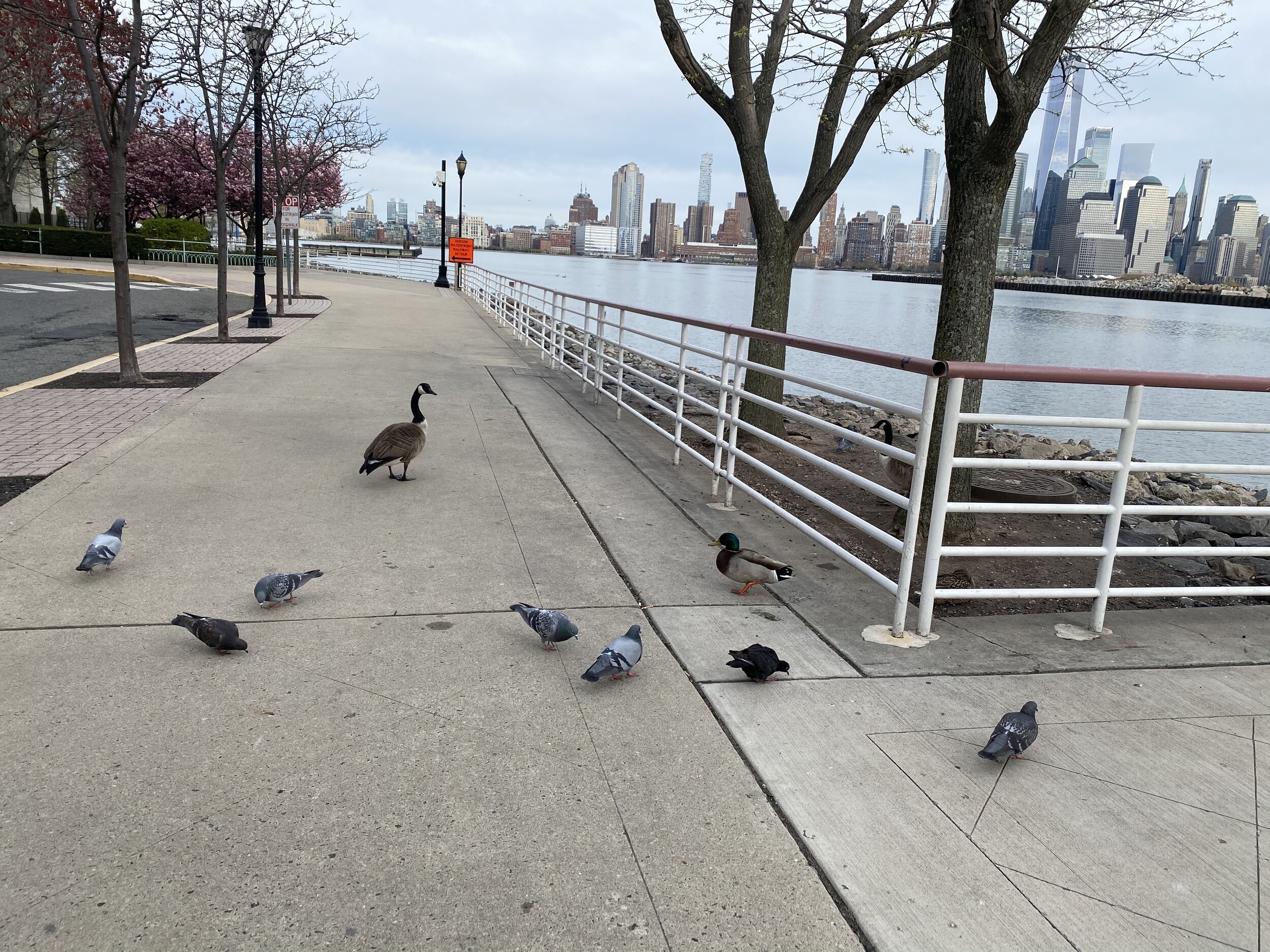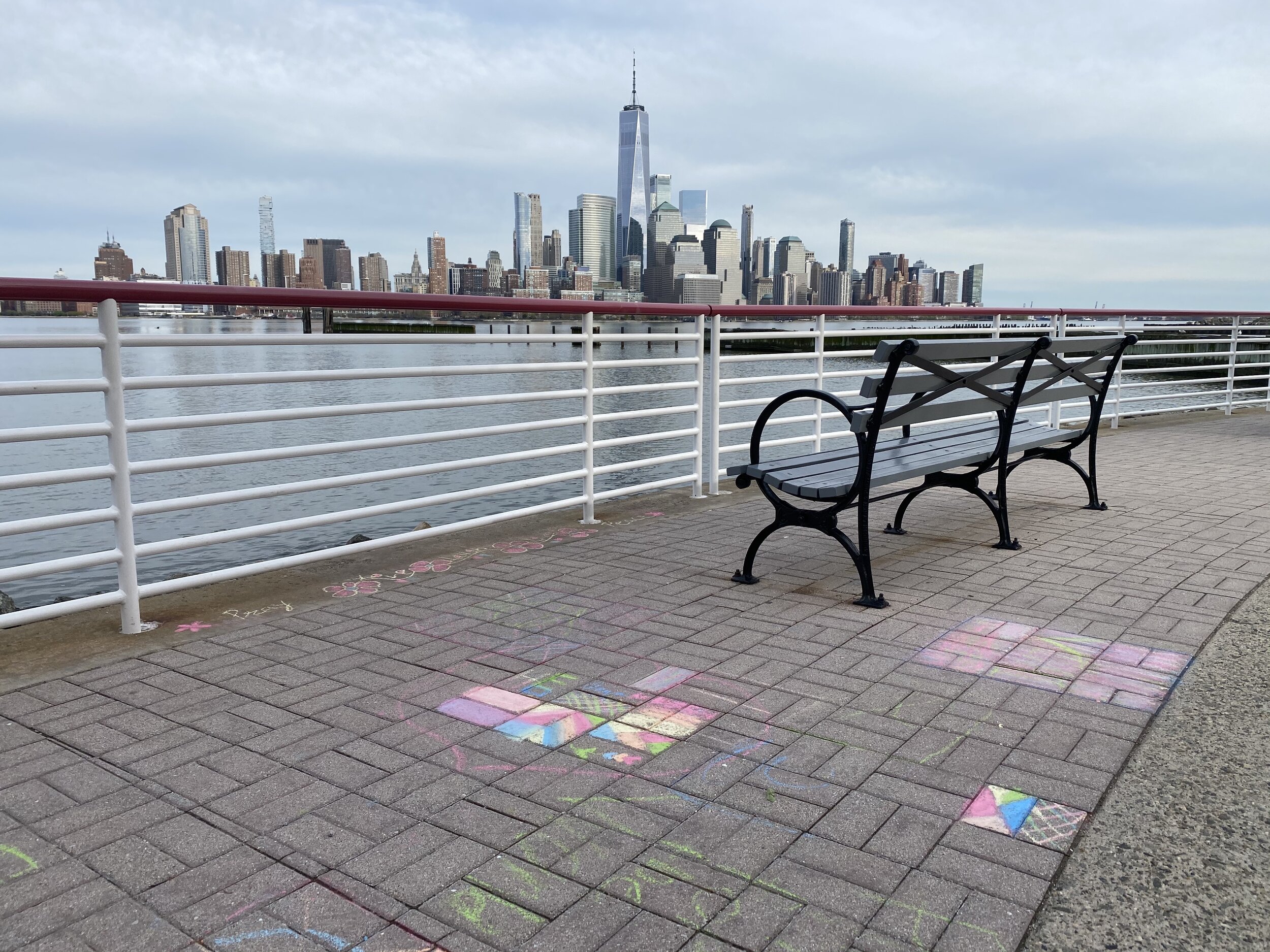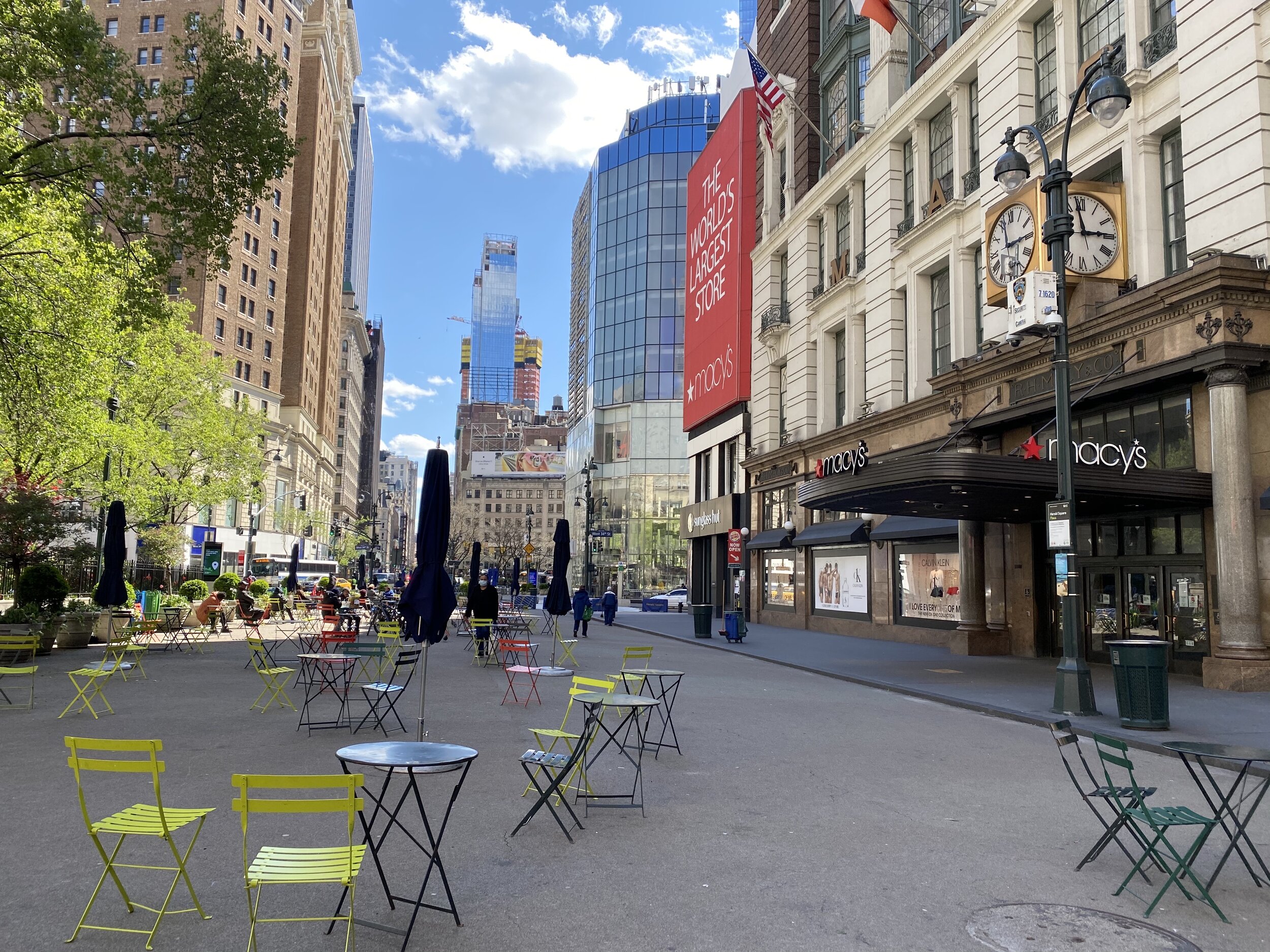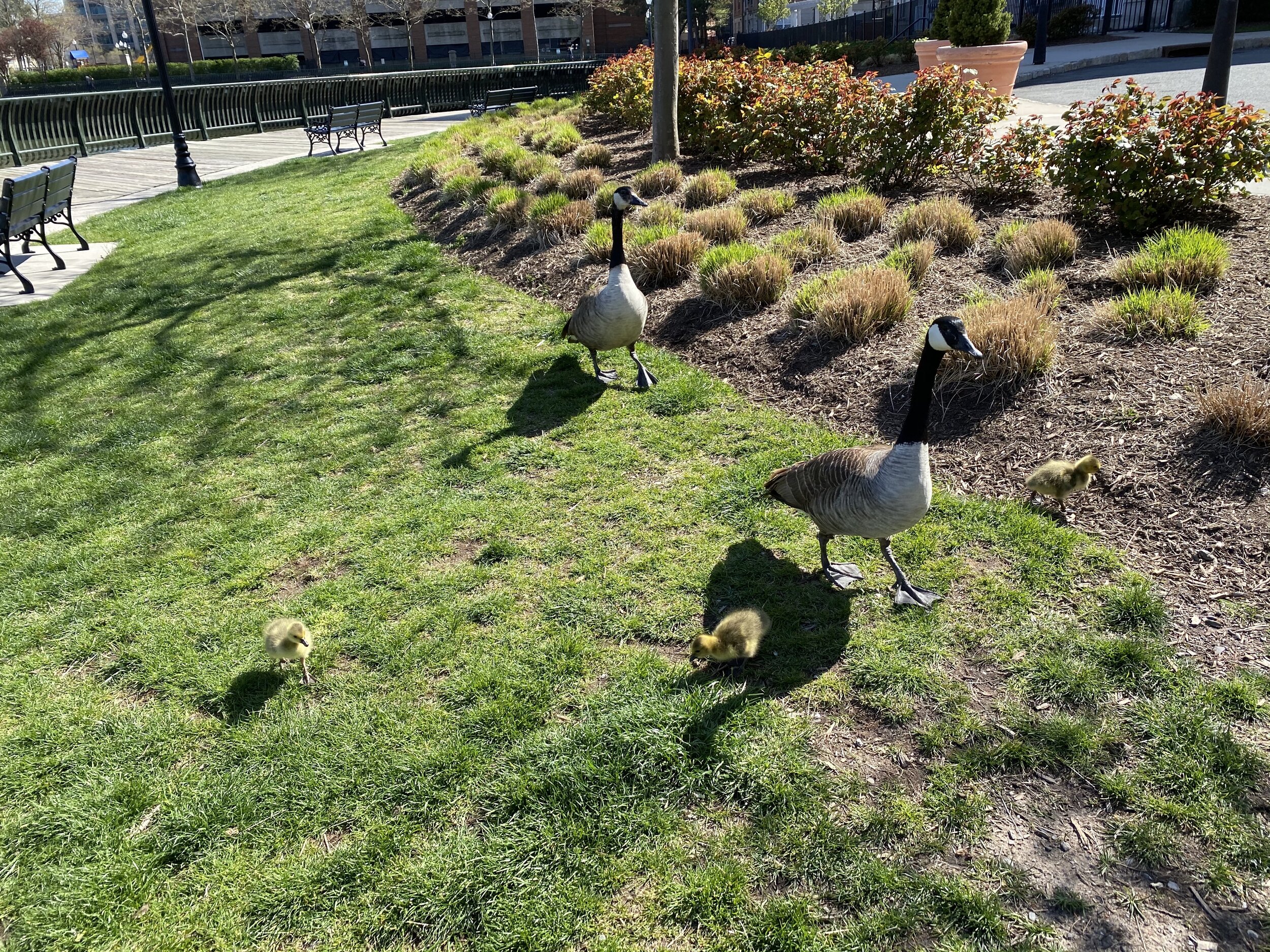Composer Notes
Early History
1981/ 2008 - Snowflakes - piano
Created in the fall of 1981 during senior year in high school, as part of the school’s first ever Gifted and Talented program. I decided to try music composition and came up with the beginning part of what eventually became “Snowflakes”. This, along with countless other things written in the first decade, remained unnamed, unfinished snippets of music until 2008. I got stuck, came up with the start of a second snippet of music which had no beginning or ending, decided I wasn’t ready to embark on becoming a composer in a public forum, and left the program.
1989 - Lost Hills - piano
Inspired by a vacuum cleaner commercial.
1990 - Rosie - piano
Turned on a tape recorder, sat down and improvised it from start to finish, slowly, with no mistakes.
1991 - Untitled Snippet - piano
This exploded in my head at full speed while on the train commuting from Basking Ridge, NJ to the World Financial Center in Manhattan early one morning. I wrote it down and was surprised later when I got to a keyboard, that it was correct. Strangely, this is the only time that ever happened - sis and I had absolute pitch. She says she writes stuff all the time in her head, and I can't seem to do that. Except for this one time. This is physically impossible to play at full speed without help from Garageband. In some alternate universe, this piece exists in its entirety, it's incredible, and can be played perfectly and at full speed by a human. :P And for all those people out there who claim they hear the most extraordinary music, sometimes entire orchestral works, they just can't write them down, I believe you.
1993 - Untitled Snippet - piano
Inspired by a murder mystery short story.
1995-1997 - Peripathetique - piano
This is the last thing written and completed before cutting refined carbs out of my diet. There was such a world view shift I stopped composing and didn't pick up again until around 2002.
Peripathetique was the first attempt at really pushing the edges of the envelope as a composer. After surfacing three years later with a completed work, the muse in my brain said: “wow! What an epic effort. But what I’m looking for is richer and less jarring.” I looked up at the sky and yelled: “could you Please be a little more specific?!” I got my answer 15+ years later in the form of Thelxiepeia’s Lament.
2004 - Garageband Experiments
These were written when Garageband first came out. These three works are a collaboration between Frank (my husband) and myself. Being a pianist, I could compose, but with no sense of orchestration. My husband played clarinet in large jazz bands and didn’t compose but understood immediately how to orchestrate what was being composed. Unfortunately, during one of the transitions to a new computer, we lost the original Garageband files and only have these MP3 recordings.
In this series: French Bistro, Gypsy, iSpy
2005 - Trinkets Series - piano
A piano student told me he loved new age music, and I said that stuff is easy, anyone could write that. He was so startled I sat down at the keyboard and started composing something on the spot - the first few bars of what became “Reflections”. I went home determined to make a point, and sat down for four straight days cranking out a bunch of "trinkets", many of them not complete. Whenever I got stuck, I would start something new or go back to something previously unfinished.
Songs in this series: Reflections, Gaela, Muirland, Triana, Steampunk Music Box (completed 2014), Arietta, Complaints, Musette, Farewell, Sparkling Brook, Swirling Mist, Pandora’s Box (completed 2014), La Luna, Triple Espresso.
2007 - C5 - piano
C Major, 5 beats per measure.
2009 - Science Series - piano
Do you know the first 50 digits of pi (after the decimal)? Assume middle C is 1, (B below middle C is 0), D is 2, E is 3, all the way up to 9 being D. So the melody for 3.1415... is mi do fa do sol re re (back down an octave) la sol mi sol do, etc...
Part 1: 50 Slices of Pi
Part 2: 100 Slices of Pi - continues after 50 Slices with the next 100 digits
Part 3: 150 Slices of Pi - this brings us to 300 digits
Transition History
2012 - Haunted Dreams Series - piano
For 25 years there was a lot of growth as a composer, then for 5 years after that, a lot of pruning. Dad at one point said I kept writing the same thing over and over. That’s because each time, I could hear what I was trying to do, but there was also noise getting in the way. When I wrote Peisinoe at the 30 year mark, this was the first time no pruning was necessary, and what was going on in my head was accurately reflected in music.
Haunted Dreams series: Peisinoe, Aglaope, A Watery Waltz, Thelxiepeia’s Lament, Still Waters, Pandora’s Box (Thelxiepeia’s Revenge). Guerre des Sirènes was started but then abandoned.
Originally there were three movements - Peisinoe, Aglaope and Thelxiepeia’s Lament, but the three together are too dense. Then an incomplete work from the Trinkets series became Pandora’s Box. A Watery Waltz and Still Waters were created to add breathing room to reduce the amount of listener fatigue, and Guerre des Sirènes was abandoned because six parts is enough. Rather, to add it would require another palette cleanser, then Guerre des Sirènes as the finale, making this 8 parts.
To do: Add saw to Peisinoe?
Feb 2020: Interesting that through Facebook I learned of an illusion artist who created a work of art titled “Still Waters”.
2014 - Make Up Your Mind - piano
Like Spinning / Gninnips, I wrote the first part of Make Up Your Mind, then showed it to my former high school chorale director. He liked it, thought the last part was particularly interesting, and suggested I expand it. I got another idea for a composition, moved on, and was surprised when it eventually looped back to the part the director found intriguing. That turned into the other half of Make Up Your Mind.
Juilliard Extension Division
Intro to composition
2016 - Saoirse - violin solo
This was a study in “triumph and tragedy”, and later turned into a violin / piano duet. This was my first class at Juilliard and I admit it freaked me out. When I auditioned, I’d brought sheet music in for Thelxiepeia’s Lament and a couple others. Ray Lustig and Conrad Cummings thumbed through quietly as I got increasingly nervous. Then Conrad cleared his throat and said: you’re very ambitious, aren’t you? I almost cracked since at that point I had gotten as far as I could as a self-taught composer. So what does he do for a first assignment? Violin solo. At first I thought darn, I must have signed up for the wrong class! He had a triumphant grin on his face and I realized he was taking all of my toys away so he could get me to focus on what I needed to learn. And I admit - there was more than enough to learn, with Sibelius, a new instrument (ranges and features different from piano), non major/minor modes, etc.
2016 - Cidered in Vienna - violin / viola duet
Intro to Comp assignment 2: a study in "awkward moments". Story behind "Cidered in Vienna (and all covered with cheese)": A number of European greats (and one robot) bridge time and space to meet in Vienna and party. They promptly get snockered.
2016 - Echo and Narcissus - violin / cello / piano trio
Intro to Comp assignment 3: a study in "passionate trios".
The story involves the loquacious nymph Echo, whose impertinence led to her being cursed by a goddess so that she could only repeat whatever anyone said. She encounters Narcissus and falls for him, only to be spurned. (Narcissus is later cursed by another vengeful goddess, falling so madly in love with his reflection in the water that he wastes away.)
This is a dysfunctional story - a cautionary tale of "romance" as if viewed through a funhouse mirror.
2016 - Ragweed Woogie - piano
Intro to Comp assignment 4: Allergy season exasperates Chewbacca.
Piano solo, with styles randomly picked out of a hat (Ragtime). The goal was to study the genre's defining characteristics and compose two minutes of music in one week. This was written in two days, within a ten hour period.
Other
2016/? - A Jurassic Day - varied ensembles
At the time this was an overly ambitious work, inspired by a bass clarinet/bassoon couple and their friend who was a flutist.
Part 1: Jurassic Dawn (2016) - bass clarinet, bassoon, flute, piano - unfinished
Part 2: Sunset Isle (2017) - violin, cello, piano
Part 3: The Tarpit Dance (2016) - piano, possibly with saxophone or low alto female voice. While discussing composing with someone who regretted his piano skills weren’t very good, it occurred to me that even with serious constraints, it’s possible to compose. The Tarpit Dance uses one single structure throughout - octave in left hand and major 7th intervals in right hand.
Composition Fall Semester
2016 - string quartet
The goal of the semester was to build a three movement composition, but composing backwards, starting with the third movement, second, then first. The hope was that at the end, students would be forced to tweak the other movements to create a cohesive whole.
Channel Surfing - snippets of music remixed
Lullaby of the Doomed - slower second movement. “Sweet dreams, little ones” she crooned, as nuclear winter blanketed the earth. This was one of the stranger composing sessions - this wrote itself immediately - but with all quarter notes and eighth notes. A considerably greater amount of time was spent trying to flesh this out, and this was done before taking the Orchestration class. There is an updated 2020 piano version.
The Fawn and the Alligator - This was a study in contrasts using a more declarative style. One important lesson learned from this assignment is that short, choppy phrases do not play to the strengths of stringed instruments. Replacing the short and choppy string parts for the fawn with a flute might help.
Composition Spring Semester
2017 - Augur - soprano / piano duet
The first assignment for the Juilliard Composition spring semester focused on learning to compose for voice and correctly notate lyrics. This was performed in the first ever Juilliard Extension Division Composition Showcase.
The video below is the Sibelius playback with my voice added. The Showcase Performance link is from the Juilliard showcase.
2017 - Redemption - clarinet / violin / piano trio
This is the first time composing for a wind instrument: clarinet. In this assignment, each instrument had to have a melody, do staccato, or do something wavy and had to switch midway.
2017 - The Awakening - string quintet
This was the first time the composition class paired with the conducting class. The assignment was to create a conductor-challenging work - with accelerandos, ritardandos, GPs, fermatas, dynamic changes - the works. This is a fantastic opportunity for composers to learn to notate properly not only for performers, but conductors as well. The difference between a student conductor versus the instructor can be quite stunning.
2017 - Carillon Fantasies - piano solo
This was a study in doing variations.
Orchestration Fall Semester
2017 - The Juggler - violin / viola duet
First assignment for Juilliard Extension Division Orchestration class. The last note for the viola involves slackening the lowest string, and plucking it while tightening it as a comical sound effect. The performer didn't do this because in a short, highly time-bound reading at Juilliard, it would take too long to retune the string, and it could damage the instrument. Do orchestras keep old stringed instruments around for this purpose? Could it even be in the domain of the percussion section, to create these effects?
2017 - Fae Forest - harp / vibraphone duet
The vibraphone sounds best with hard mallets, since the effect sounds like chirping birds.
2017 - Prokofiev Sonata No. 4 - ensemble
This involved taking a couple excerpts from the third movement and adapting it to an ensemble consisting of 3 violins, 3 violas, 2 cellos, 1 bass, and 1 harp. 2 percussionists played cymbals, triangle, conga, bongos, snare drum, vibraphone, and marimba. There was no guidance on how to orchestrate something (that apparently happens in advanced orchestration).
1. Pianistic elements like the do sol mi sol pattern tend to be harder for stringed instruments.
2. At bar 39 the players mentioned having to jump strings in order to play it, so this is one section that can be reworked.
3. The music is adapted to Sibelius, which doesn't properly play glissandos across barlines, and percussion instruments.
The amount of work that has to be done to get this right is enormous, even with existing music with markings. Orchestrators need to focus on dynamics, slurs and articulations, placement of voices, reworking for instrument ranges, parts, historic vs. current music notation standards, transposing instruments and their enharmonic issues. As well as trying to get everything to fit on one page.
2018 - The Hummingbird Jive - oboe / bassoon duet
There are rare times when it feels like the subconscious has been mulling over a problem for an entire lifetime. It then stands up and says “I am ready to speak” and burps something out like the last 13 bars of The Hummingbird Jive. The rational part of my brain screamed “What just happened?!” and I’m still trying to figure that out.
2018 - Quartet in G Minor - wind ensemble
These are excerpts from the only string quartet Debussy wrote, adapted to wind ensemble. The wind ensemble is comprised of flute, oboe, clarinet, bassoon, horn, trumpet, trombone, and tuba. The challenge with this is that string players don't have to worry about breathing, so long passages need to be adapted.
Time-saving tip: Print out the original excerpts and number each measure so that it matches your project.
Music Production Fall Semester
Music Production and Orchestration are prerequisites for taking Advanced Composition.
Logic Pro is an amazing tool and overwhelming to the uninitiated. The Youtube videos by MusicTechHelpGuy are worth watching as well. We were like kids in a candy store. These are purely Logic Pro projects, there is no sheet music.
I also retook composition in this same semester so the projects for both classes are a little shorter than usual, and in the case of PsiLounge Beyond the Edge of the Universe, the same source material is used for both projects.
2018 - A Manhattan Lullaby
The assignment covered Apple Loops, learning to manage volume, panning, and fade in and out. Vocals are my own.
2018 - Ghosts of Gaia
This ambient track was created by reversing and elongating loops.
2018 - Electric Dreams
The assignment covered automation. It turns out automating the solo feature doesn’t work too well. The Logic Pro project sounds correct, but the generated mp3 has a curious gap in it. This was taken behind the barn and shot afterwards.
2018 - PsiLounge Beyond the Edge of the Universe
The focus of the assignment was samplers and space design.
2018 - Eileen’s Voice
Each person recorded one minute of spoken text or poetry. The recording was sliced it into vowels which became pitches, consonants which became drums, and snippets of spoken text to use as loops. The rest is all manipulation through Logic Pro.
2018 - Musica Universalis
After focusing on samplers in previous assignments, this assignment dove deeper into synthesizers.
Composition Revisited - Fall Semester
2018 - Equine Escapees - violin duet
Violin duet showcasing everything plus the kitchen sink. Diatonic, non major/minor, non-diatonic, homophonic, imitative contrapuntal, jagged rhythms, etc.
2018 - PsiLounge - string quartet version
Original source material: music production project, completely rewritten for string quartet.
2018 - Harvest Moonshine - violin / cello / piano trio
Second time taking composition, this Conrad Cummings's perennial "drunken villagers" assignment was a trio for violin / cello / piano done in fall 2018. Apologies to Neil Young whose "Harvest Moon" ballad is actually quite sweet. Note: the MIDI recording uses pizz instead of arco staccato because it sounds better. In a live reading, pizz is too quiet. The sheet music correctly reflects arco staccato.
Inside scoop: There were two Broadway music directors in our class. The readings are usually performed in the order that people walk into class, and I’m generally early or on time. So Harvest Moonshine was read before the two music directors did their readings. This was one of the better endings in these assignments - fall 2018 was one of the strongest groups of composers we ever had, so it was game on for everyone. Afterward, both music directors took control of their own readings, had the performers rewrite the endings in their sheet music on the fly to be much more impactful, and ran their own readings. It was magical to watch.
2018 - Extasia - piano solo
Virtuoso piano solo.
Composition Revisited - Spring Semester
2019 - Driven - soprano / piano duet
The subject of the assignment was “confessions”. This sounded impossible, then my dad asked for the hundredth time what it’s like being a composer.
Lyrics:
My father asks again and again
how on earth does anyone compose music?
He thinks that by magic
a secret will make him a composer.
As a composer, I did not choose this.
As long as I can remember,
I was horrified
that nothing
reflected the world inside my brain.
Alone.
Musically homeless.
Bach or Beethoven -
imagine that they felt the same.
Their sublime melodies and my strivings
are homes painstakingly built
brick by brick,
note by note
So that we could feel the shelter
of a magical embrace.
2019 - Menagerie - Pierrot ensemble
Five part micro-suite using “Pierrot ensemble” consisting of flute, clarinet in B-flat, violin, cello, and piano.
Part 1: Dogs in an Elevator (all instruments)
Part 2: Crane Tangled in Fishing Line (flute and cello)
Part 3: Baby Bunny Trapped in Garage (clarinet, violin, piano)
Part 4: Gilded Birdcage (flute solo)
Part 5: Ménage à Tutti (all instruments)
2019 - Trout Variation - violin, viola, cello, bass, piano
The assignment was to create a Trout variation.
2019 - Forloon - piano solo
The assignment was to take a few seconds of the beginning of unidentified music As Is and complete a composition. Mine was the first part of Brian Fennelly’s Tangoblique. Many of us felt what we came up with was better than the original. When I heard the snippet, my immediate thought was this was the start of a break up:
Person A: “This isn’t working for me anymore.”
Person B: “Whaaaaaaat????”
Person A: “I think we should break up.”
Person B: “But I’m happy.”
”I’m not.”
”But you complete me.”
”You don’t.”
”I can change!”
”It’s not you, it’s me.”
Once I had a story, this just wrote itself. I would have been in a lot more trouble if the music didn’t speak to me. These types of assignments are challenging.
Advanced comp - Fall Semester
2019 - Dinner with the Goldbergs - piano solo
Three movements based on three types of Goldberg variations - canon, song/dance, etc:
Churrasco by Candlelight - song / dance - redid score in 2021, re-recording
Baked Alaska - a non-canon using canons. This one interleaves 15 and 18. Not Easy to do this and come up with something that sounds halfway decent. Since this was supposed to have two sections, the attempt was to create an interleaved work (first third), then create another composition that would augment the first part, while being a completely different composition. The third part would meld parts 1 and 2 into a two-piano work. This is the first third, and the rest of it won’t see the light of day. In fact, what was handed in the second week was re-titled “Half-Baked Alaska”.
2019 - Autumn Winds - sextet SSSAAA
This was a completely free-form assignment - anything crafted for a sextet. This is a challenge because all of the voices are female and in a similar range. On the other hand, if I had tried a sextet right off the bat with the entire SATB range I’m sure it would have been a much harder project. This was a great way to transition into writing choral music.
Advanced comp - Spring Semester
2020 - The Harbinger - piano and string quartet
The goal for this particular module was to first create a piano short score, handwritten, that we could perform in class. The completed piano score was done in a week. Advantages to handwriting your score: you’re closer to the music, and at least generating questions about things like enharmonics earlier. When using Sibelius, the tool will, willy nilly, lay down notes spelled a particular way, beamed a particular way, and often things are not correct. Disadvantage: I did strange things like hand write dotted quarter note sixteenth note all over, and didn’t realize it until I tried to input it into Sibelius. But that’s why this system of composing is powerful - in doing a form of double entry validation, the likelihood of catching errors created both manually or in Sibelius is greater.
This also mirrors the mindset of a good software developer, at least, one familiar with Martin Fowler’s book Refactoring. The premise is simple - build something first, and get it working. Once it is working, evaluate the structure of the code and clean it up and optimize it - without impacting the existing functionality of the code. Why? Because trying to do both at the same time is more complicated and error prone. If an error crops up - is it because you’re not doing something correctly, or is it a problem with how the code is structured?
It makes sense, as one becomes a more mature composer, that the composing process should follow a similar vein. Use the piano first to build a complete short score that is correct. Then and only then, begin thinking about how you would orchestrate the score, e.g. given the range, which instrument should get which portion? As with the software developer example, it should be clear in each stage there is plenty to do without adding any extra complexity.
2020 - The Puzzled Goose - piano and soprano
Our last module for Advanced Composition involved creating an art song. This had become a COVID world, so the subject became COVID in the eyes of an avian Manhattanite.
Lyrics
Honk!
So this is my voice
without the orchestra behind it.
How curious,
walking on this sidewalk
and now this road
no longer afraid.
Where did they go?
Those harried humans
scurrying to and fro,
those monstrous metal beasts
blaring impatiently.
A towering concrete jungle,
stripped of its heartbeat,
leaving only a skeleton.
Imposing yet bereft,
caressed by a gentle breeze,
now silent.
Our fuzzy little tennis balls with webby feet,
in springtime, normally ogled by the paparazzi.
Where did they go?
Not that I'm complaining.
The water sparkles.
The air is clean.
Approach
I’ve had three classmates who were music directors (on and off-Broadway), and the consistent thing is that they would come in with sketches, whereas out of fear I would tend to burp out as much as possible in completed form. So for this assignment, I decided to try things their way.
The first week there were enough sketches for a minute of music, and they were completely disparate. During the 1 on 1 session with our instructor Evan Fein, ideas for how to expand them and transitions between them became clearer. Those ideas were far superior to what I would have come up with in my usual process of composing from beginning to end.
Benefits: with sketches, you can choose which ones are working and discard the ones that aren’t (or put them in a bucket to use later). The composition can organically grow in the right direction, as opposed to trying to fix something after the fact. Just the ideas from one minute of sketches eventually expanded into an over four minute composition.
Post-Composition
2020 - Lullaby of the Doomed
After completing the composition courses in the Juilliard Extension Division, the first assignment that went through a rewrite was “Lullaby of the Doomed”, a string quartet done in fall 2016. Because it had derailed in a unique way I had a fresh pair of eyes look at it (Evan Fein) and this is the result. Same with Carillon Fantasies.
Advanced Comp (Fall Semester again)
2021 - The Butterfly - clarinet / bassoon / piano ensemble
This was a two movement work and a bookend to “The Puzzled Goose”. The Puzzled Goose was written just as we went into lockdown; one week we walked into our classroom as usual with Dalit Warshaw and worked on our assignments. The next week, we were meeting Evan Fein on Zoom. The Butterfly was written during the reverse process: our first in-person class since March 2020, with Conrad Cummings, and being like the butterfly emerging from its cocoon.
Movement 1: Emergence - Emerging from a cocoon, vulnerable and fragile. Notationally: The repeated notes in the piano aren’t correct, there should be no more than 10 - 15 repeats, should be able to do by changing the time signature but couldn’t figure it out. Audio is piano.
Interesting point about the piano performance: for several days, I would do a run-through, then start recording and capture multiple takes, none of which was satisfying. Finally one day, I started recording, and played it once. This is the recording.Movement 2: The Untethering - Begins with frantic fits and starts, leading to a first flight of pure terror, to tentative and wobbly, to triumph in the end. Audio is a MIDI rendering of the ensemble.
2021 - The Fire Ant Dance - guitar / cello
The style for this ensemble is “chaotic virtuoso”, meaning this isn’t Itzhak Perlman having practiced, with impeccable technique and soaring rhetoric. Rather, this is a virtuoso performer who woke up, grabbed an instrument, and played this at breakneck speed, and that is the performance.
There are really only two speeds: slow and breakneck. While there are numerous changes between straight time and compound time, it’s eighth note = eighth note, meaning the speed doesn’t actually change.
What is breakneck speed? The fastest that a guitarist can perform the fastest 16th notes in any particular section, whether those notes are duplet or triplet.
2022 and on - Post-Juilliard and EAMA
This is the start of a new phase and the first year I’m not taking classes at Juilliard.
In the Unbridled SoundCloud playlist on EileenSauer.com, there are two new tracks:
An art song to Wynken, Blynken, and Nod - sheet music for Wynken
An expansion of Snowflakes, turning the original 20 bars written in 1981 into a 40 year retrospective - sheet music for Snowflakes (1981 / 2008 / 2022 version)




